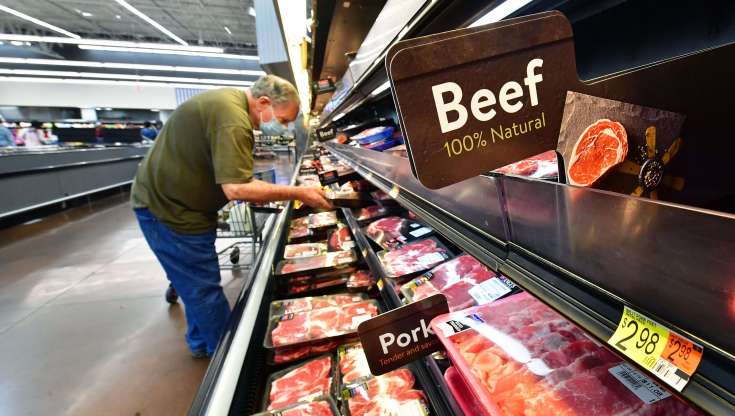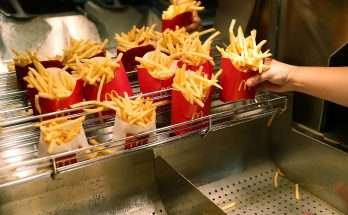
Inflation rose in October about in line with estimates, sending a sign that price increases at least might be stabilizing, the Commerce Department reported Thursday.
The core personal consumption expenditures price index, a gauge that excludes food and energy and is favored by the Federal Reserve, rose 0.2% for the month and was up 5% from a year ago. The monthly increase was below the 0.3% Dow Jones estimate, while the annual gain was in line.
The gains also represent a deceleration from September, which saw a monthly increase of 0.5% and an annual gain of 5.2%.
Including food and energy, headline PCE was up 0.3% on the month and 6% on an annual basis. The monthly increase was the same as September, while the annual gain was a step down from the 6.3% pace.
The department also reported that personal income jumped 0.7% for the month, well ahead of the 0.4% estimate, and spending rose 0.8%, as expected.
In another key report, a widely followed gauge of manufacturing activity posted its lowest reading in two and a half years for November.
The ISM Manufacturing Index registered a reading of 49%, representing the level of businesses reporting expansion for the period. The reading was 1.2 percentage points below October and the lowest since May 2020, in the early days of the Covid pandemic.
Declines in order backlogs and imports were the biggest drags on the index. The closely watched prices index was off 3.6 points to 43%, indicating inflation is abating, while the employment index also receded, down 1.6 points to 48.4% an contraction territory.
Markets were mostly lower following the morning’s data, with the Dow Jones Industrial Average down more than 250 points in early trading while the S&P 500 and Nasdaq Composite posted smaller losses.
“This morning’s data was a goldilocks report as it showed core inflation continuing to drop,” said Chris Zaccarelli, chief investment officer for Independent Advisor Alliance. “If inflation keeps coming down, then markets will keep running higher, as investors will conclude that the Fed won’t need to raise rates as high, or keep them high for as long, as previously expected.”
While the Fed takes in a broad range of measures to gauge inflation, it prefers the PCE index as it takes into account changes in consumer behavior such as substituting less expensive goods for pricier items. That’s different than the consumer price index, which is a raw measure of changes in prices.
Policymakers view core inflation as a more reliable measure as food and energy prices tend to fluctuate more than other items.
In other economic news Thursday, the Labor Department reported that weekly jobless claims totaled 225,000, a decline of 16,000 from the previous week and below the 235,000 estimate.
Another jobs report from outplacement firm Challenger, Gray & Christmas indicated that planned layoffs increased 127% on a monthly basis in November and were up 417% from a year ago. Even with the massive surge, the firm noted the year-to-date layoff total is the second-lowest ever in a data set that dates to 1993.
The data comes at a pivotal time for the Fed, which is in the midst of an interest rate-hiking campaign in an effort to bring down inflation.
In a speech Wednesday, Chairman Jerome Powell said he saw some signs that price increases are abating but added that he needs to see more consistent evidence before the central bank can change gears on policy. He did, however, indicate that he thinks the rate hikes can start getting smaller, perhaps as early as December.
“The truth is that the path ahead for inflation remains highly uncertain,” Powell said.
The PCE data showed that the numbers remain volatile. Goods inflation rose 0.3% for the month after declining the previous three months, while services inflation increased 0.4%, down from two consecutive 0.6% increases. Economists have been looking for a shift back to a more services-based economy after outsized demand for goods played a major role in the inflation surge in 2021.
Food inflation increased 0.4% while energy goods and services prices rose 2.5%.
The Fed is watching the jobs market closely for more signs of cooling inflation.
Jobless claims had been trending slightly higher, and the level of continuing claims increased 57,000 to 1.61 million, the highest level since February.


